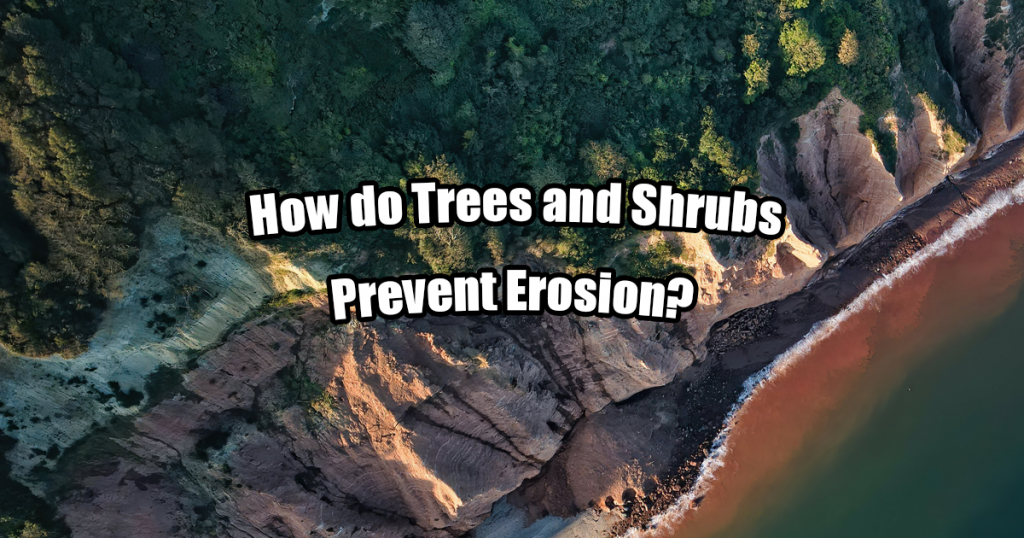
Trees and shrubs are a vital part of your home’s landscape. The provide visual interest and welcomed shade, but they do a lot more than just lend to the aesthetic appeal of your yard; trees and shrubs also play a crucial role in soil erosion prevention. While soil erosion is a natural phenomenon, it is responsible for serious damage and loss to vegetation, agriculture, and property, and therefore, in large quantities, soil erosion can be considered an environmental problem. Over a prolonged period of time, soil erosion can completely degrade a landscape, decimating a once abundant and vibrantly lush location.
Fortunately, there is a way that you can minimize the risk of having your landscape fall victim to widespread soil erosion. By planting more trees and shrubs, you’ll not only enhance the aesthetic appeal of your property, but you can also prevent it from becoming a desolate wasteland. Read on to learn how trees and shrubs can significantly reduce soil erosion and why you should seriously consider planting more or maintaining the trees and shrubs that you already have on your property.
What Causes Soil Erosion?
To understand how trees and shrubs can help to reduce soil erosion, you first need to understand what soil erosion is.
Soil can be likened to the skin of the earth. Like your skin protects your internal structure’s, such as your musculoskeletal system, nervous system, and internal organs, the soil helps to protect the earth. However, not only does soil shield what lies underneath it, but it also anchors life to the earth. Erosion refers to the loss of soil, and there are three major factors that contribute to erosion, which include:
- Heavy water flow (rainwater runoff)
- Strong winds
- Land use
Heavy winds and powerful water flows, such as severe rainfall, melting ice, and landslides, can erode soil. Rigorous agriculture, infrastructure construction (building roadways, railways, etc.), urban development, and deforestation, can all lead to soil erosion. Initially, the uppermost layer of the soil, known as topsoil, washes away, but overtime, underlying layers can be washed away, too.
How do Trees and Shrubs Prevent Soil Erosion?
So, how do trees and shrubs minimize the risk of soil erosion? There are actually several ways in which flora can help to protect soil and minimize the amount that blows or washes away.
- The root systems. Roots are vital for the health and well-being of trees and shrubs, as they secure the plants to the ground, keep them hydrated, and feed them the nutrients they need to thrive. The root systems of trees and shrubs also help to reduce the effects of erosion. Roots expand far beyond the branches of a plant and they hold the soil that they grow through in place. They also enhance water drainage, reduce soil compaction, and draw moisture into the plant, thus reducing the amount that flows over the surface of the ground. All of these factors combined mean that the root systems of trees and shrubs significantly reduce the impact of soil erosion. Canal and river banks are particularly prone to soil erosion as a result of constant exposure to flowing water; thus, shrubs and trees can help to significantly reduce the impact of erosion.
- The foliage. Foliage, such as leaves, pinecones, flowers, acorns, etc., intercepts rain as it falls from the sky and minimizes the force it applies to the ground. The rain drops that are caught in the foliage of a tree or shrub channels out over the stems of the plant and then flows down along the trunk, where it is then absorbed by the soil. In other words, instead of washing over the soil with extreme force, this process helps the water penetrate into the soil. Since the foliage helps to minimize the amount of force rainwater applies to the ground, trees and shrubs can further help to prevent soil erosion.
- Wind breaks. Wind breaks refer to shrubs or trees that are planted closely together in rows on the windward side of a location that is exposed to high winds. As wind blows, it picks up topsoil, thus contributing to erosion. Areas that are exposed to severe winds over prolonged periods of time – bluffs on a beach, for example – are particularly prone to soil erosion. When several trees or shrubs are planted together, the structures help to block the wind, and thus help to minimize erosion.
Why Are Plants So Important For Beaches and Canal Banks?
Trees and shrubs are important for all landscapes, but they are particularly important along beaches and canal banks. Because these locations are exposed to flowing water and winds on a constant basis, they are highly susceptible to erosion. When planted along these areas – particularly when planted in large quantities and in rows – flora can serve as wind breaks and their complex root systems can better secure the soil in place. These factors combined mean that plants are crucial for soil erosion prevention on river banks, beaches, and canals.
The absence of trees and shrubs along beaches, canals, river banks, and any other location that is exposed to flowing water and high winds on a consistent basis can lead to severe soil erosion. Eventually, excessive soil erosion can complete desolate a landscape and even reduce the size of an area.
How Can Plants Protect Your Property From Soil Erosion?
It goes without saying that you want to maintain the overall health and appearance of your property, and planting trees and shrubs will do just that. Not only will the foliage and hardwood of the plants add visual interest and beauty of your yard, but the flora and root systems can also help to minimize the risk of soil erosion, which will certainly have a positive impact on the aesthetics, as well as the vitality, of your yard.
Conclusion Though soil erosion is a natural phenomenon and it cannot be completely prevented, plants – particularly trees and shrubs – can help to significantly reduce soil loss as a result of wind and water erosion.
